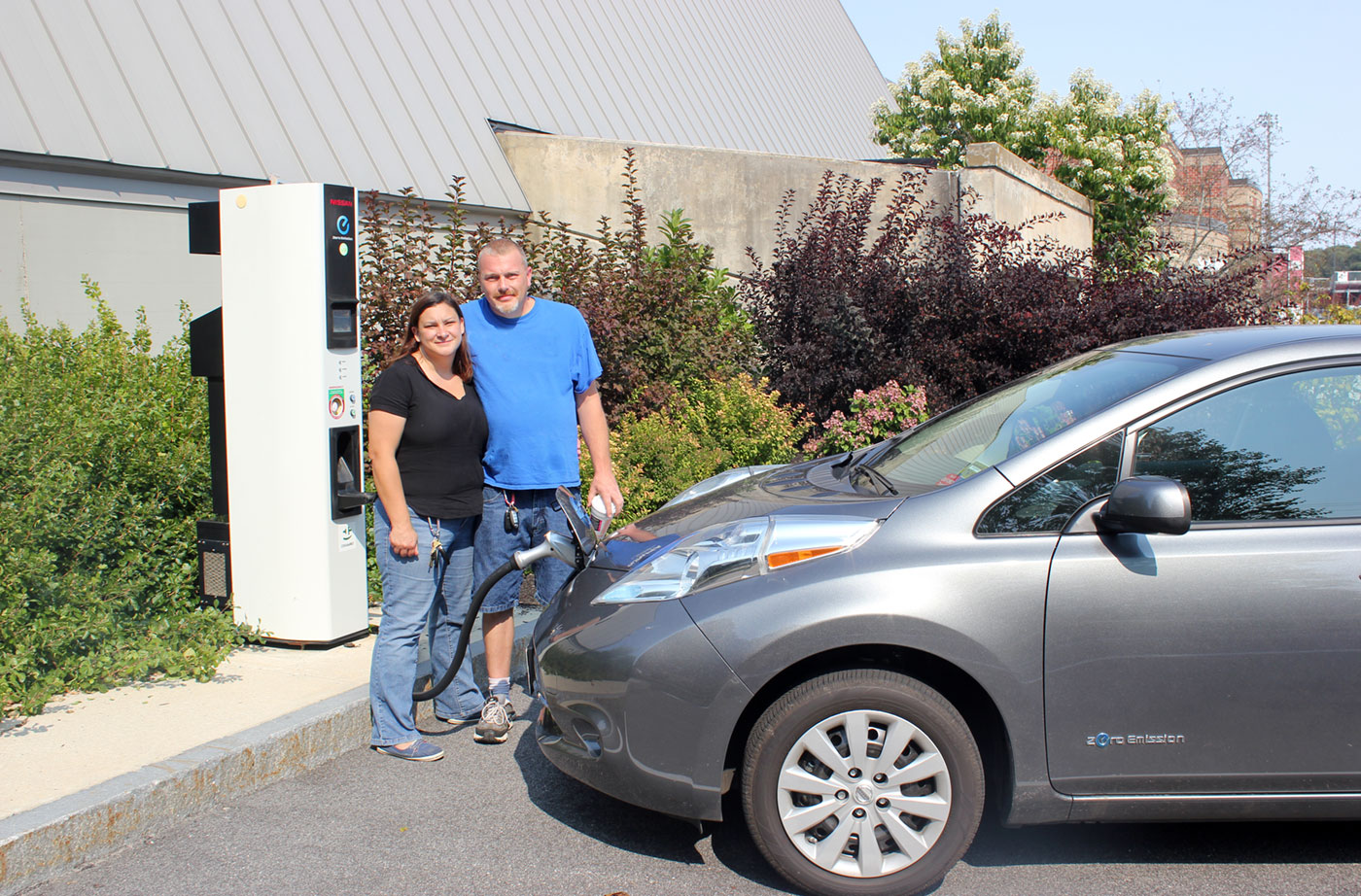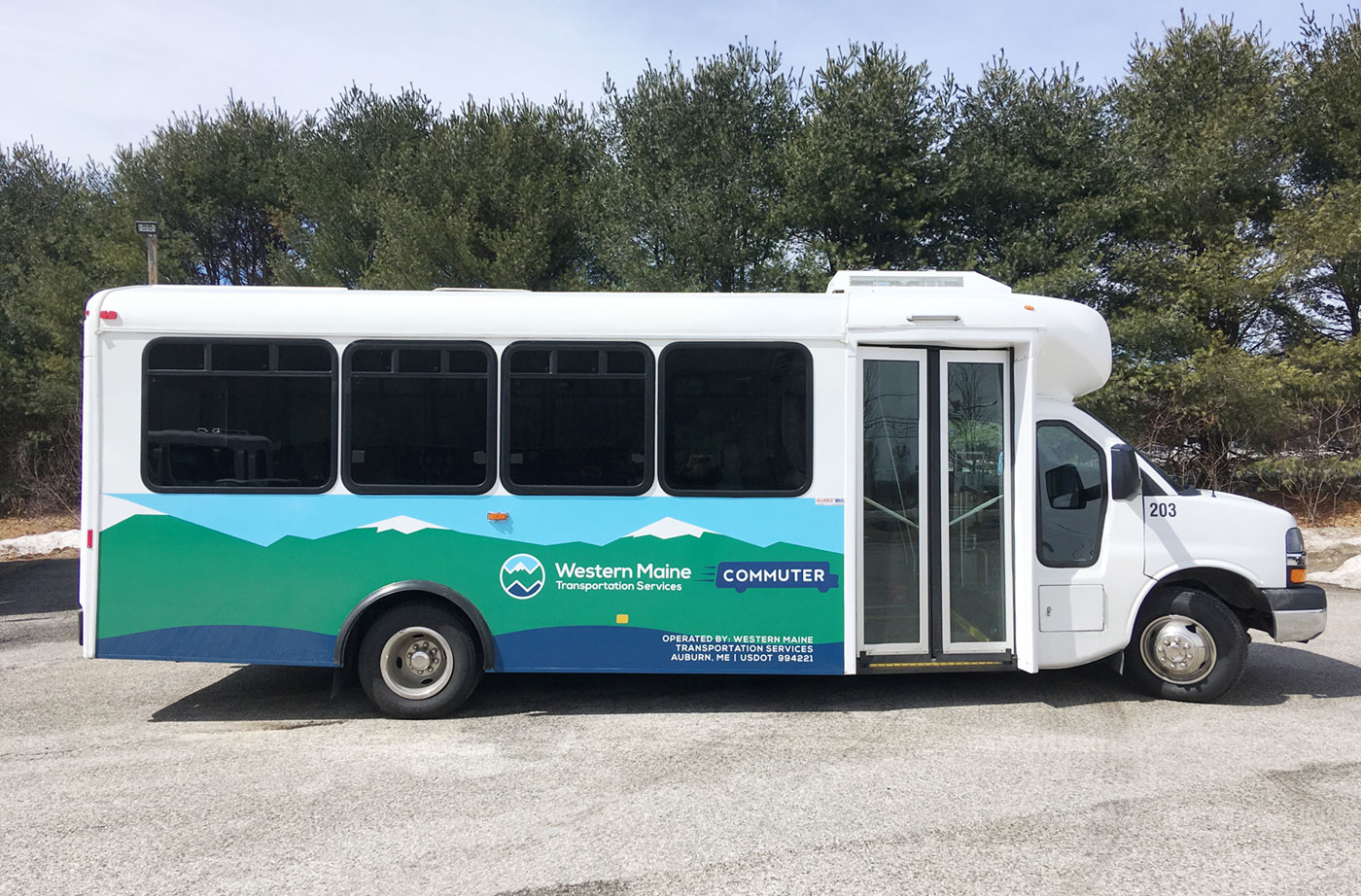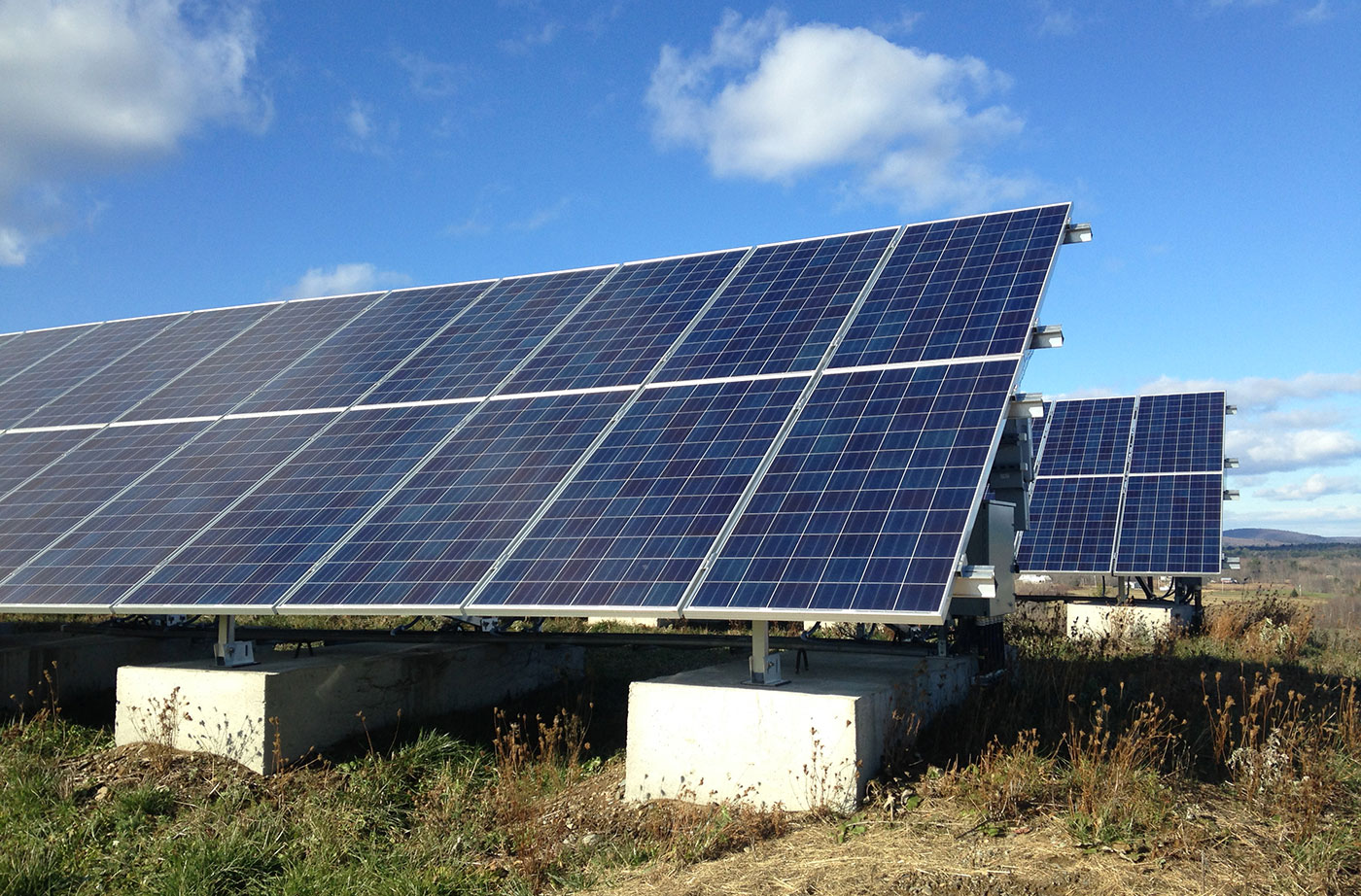Acting on climate presents an exciting opportunity to grow Maine’s economy and help Mainers across the state save money and lead healthier lives. The new statewide Climate Action Plan being developed by the Maine Climate Council and due to be delivered to the Legislature on December 1, 2020, will include recommended actions and policies to jump start the clean energy economy and give people tools to become more independent.
We profile here Maine people who have successfully implemented climate solutions that, if replicated on a larger scale, hold great promise for reducing pollution, creating good-paying jobs, and increasing resilience. If you have a story to share with us, contact colin@nrcm.org.

Joe and Tania Hutchins charging their electric car at the South Portland Community Center at an EV event.
Electric Vehicles in Oxford Hills
When Joe Hutchins went car shopping, his interest in clean energy intersected with the best lease deals, and he chose a 2017 Nissan Leaf. Joe benefitted from the Efficiency Maine rebate program for electric vehicles (EVs), which helped lower the monthly payment on the Nissan to an affordable price. The Hutchins are now saving more than $100 each month. While there are no charging stations in the Hutchins’ hometown of Oxford, they manage by charging at home and using the nearby stations in South Paris, Norway, and Auburn. Joe loves the car: he’s shared the Nissan Leaf at EV events, entered it in car shows, and posted YouTube videos featuring the car. Joe notes that electric vehicles are popular in the Oxford Hills area right now, and that with more leasing opportunities and the promotion of low-income rebates, he’s excited to see that electric vehicles are poised to expand into rural Maine.
Pollution from cars and trucks is responsible for more than half of Maine’s greenhouse gas emissions, the largest and fastest growing source of carbon pollution. Increasing electric vehicle use is one of the strategies for reducing emissions in Maine’s draft Climate Action Plan, Electric cars are significantly cleaner than gas or diesel vehicles, and have lower operating and maintenance costs. The State of Maine is aiming for an EV fleet of 40,000 vehicles by 2025. At a recent meeting of the Maine Climate Council, Efficiency Maine Director Michael Stoddard stated that Mainers buy about 70,000 cars per year. “If we can just increase the percentage of those total sales, I think we’ll get there,” he added. Fifty-two car dealerships currently participate in Efficiency Maine’s rebate program, and charging stations dot the state from Portland to Fort Kent. Reaching electric vehicle targets means continuing to expand charging infrastructure in rural areas, and ensuring affordable options for all buyers. After all, rural drivers who clock the most annual miles may derive the greatest benefits from cleaner, more cost-effective vehicles. Electrifying cars and trucks will substantially help Maine’s greenhouse gas emissions, but it is important to remember that they should be part of a broader push to modernize our transportation system, which should also include more frequent and reliable buses, and safe bike and pedestrian infrastructure—to reduce miles driven and give people healthier, more affordable options for getting around.

WMTS now runs a bus line from Farmington to Lewiston.
Connecting Rural Communities with Transit
Valerie Hastings was a bus driver for Western Maine Transportation Services (WMTS) in the 1990s. On Tuesdays, her bus filled with senior citizens from Rangeley out for their weekly shopping. On Wednesdays and Fridays, she drove clients to dialysis in Lewiston. Valerie took pride in the company’s reliability. “We had to get them to the stores and get them to their medicine,” she says. At the time, there were no other transportation options in the area, so when the company discontinued the Rangeley line in 1998, many of her riders found themselves cut off from basic services. Valerie’s verdict on public transportation in the region: “They need it!”
Western Maine may be on the brink of a public transit revival. In 2019, WMTS re-established a bus route connecting Farmington to Lewiston, the first regular bus route along Route 4 in more than 50 years. Craig Zurhost, Community Relations Director at WMTS, says pre-pandemic, the route’s ridership was growing. The Lewiston-Bath route, designed as a work-transit program, has seen consistent ridership even during the pandemic, although the buses are currently operating at 50 percent capacity to allow riders to socially distance. WMTS is interested in further regionalizing transit; a study commissioned by the company in 2017 prompted the creation of a Rangeley-Farmington route as well as the Sugarloaf Express, and explored funding options.
Vermont spends $12 per capita on public transit. The State of Maine spends less than 82 cents per capita on public transportation, one of the lowest rates in the nation. The Maine Climate Council is considering a recommendation to increase this to $5 per capita by 2025 so that people of all ages and abilities have access to affordable, reliable transit service.
The pandemic has underscored the need for accessible public transportation, especially in rural areas. Public transit fills transportation gaps; provides good-paying jobs; serves essential workers, students, and older residents; bolsters the regional economy, and can help lift children out of poverty. As we build back from this pandemic, investing in public transportation—in rural areas as well as urban—is a key component of reducing pollution from cars and trucks while transitioning Maine to a more sustainable economy.

The heat pump installed in Newman Gallagher's Presque Isle home
Activating Heat Pumps in Aroostook
Newman Gallagher hopes it will be a snowy winter in Presque Isle. The snow makes for good rabbit hunting, and, banked against the foundation, the snow will help insulate his house through the cold season in Aroostook County. He’s also looking forward to heating his home with a new electric heat pump, installed last January through the Home Energy Assistance Program (HEAP) offered by the Aroostook County Action Program (ACAP). The program provides assistance to low-income homeowners and renters to help cover heating costs.
Heat pumps are an increasingly popular energy-efficient heating and cooling solution that facilitates the transfer of air between the indoors and outdoors to achieve a desired temperature. Newman Gallagher’s house is small, and with the heat pump, he can run his furnace less often and at a lower temperature. He is now saving 40 to 50 percent on heating costs. “It’s a wonderful program,” Gallagher says. “The heat pump takes the dampness off.”
HEAP provides energy assistance through weatherization, central heating system improvement, and fuel assistance programs. ACAP installed 95 heat pumps this past winter, and the current wait list is approaching 400 households. In a county larger than Connecticut, it can be difficult finding vendors to complete installations and challenging to stay within their funding limits. Newman Gallagher added that while a heat pump works well for him, efficacy depends on the set-up of the home. In places like Aroostook, heat pumps can be an effective complement to a primary heat source, and with opportunities from HEAP and the Efficiency Maine rebates, they are now accessible to a wider range of Mainers. At least for a growing number in Aroostook County, heat pumps are helping take the edge off winter.

Solar power is being installed throughout Maine. This solar array is located in Belfast.
Bright Solar Opportunities Downeast
“It’s odd when we get something that works the way it’s supposed to,” reflects Sunrise Opportunities Executive Director Tom Michaud. He’s talking about his organization’s new solar installations, which are funded by an Efficiency Maine grant.
Sunrise Opportunities is a social services nonprofit that supports adults and children with disabilities in Washington County through a diverse array of services, including the only homeless housing program in the county. Faced with the costs of resident services, full capacity in their subsidized housing, and unstable funding, Sunrise hoped to reduce overhead on electric by applying for an Efficiency Maine grant. In 2018, they received grants for solar installations at two housing sites: the Milbridge Harbor Apartments and Dennysville Housing. Two years later, the apartments have no electric bill, which is helping Sunrise deliver on other services to residents. They are seeing a four-year return on their solar investment, and, as Tom points out, given that the life expectancy of the equipment is 20 years, they will benefit from more than a decade of free electricity.”
As part of the grant, Sunrise hosted an open house to share their solar project with the public. The installations garnered significant community interest, from individuals as well as from larger institutions like the local community college. Tom is now looking into other energy projects to bring to Sunrise Opportunities and is considering installing more solar panels. In 2019, a new law expanded access to solar for local businesses, towns, and Maine residents. The Maine Climate Council is considering recommendations to increase the adoption of cost-effective solar with funding programs that help organizations like Sunrise benefit from clean energy so they can focus their resources on their primary mission of serving people. Tom is optimistic about the future of solar energy in Maine. “The trend is heading in the right direction,” he says. “People will vouch for it being the real deal.”
—by Katie Moody, from Appleton and a recent Dartmouth College grad, who interned at NRCM before heading to Appalachia on a fellowship to study energy transition issues
Originally published in NRCM's 2020 Fall/WInter Maine Environment newsletter.











Leave a Reply